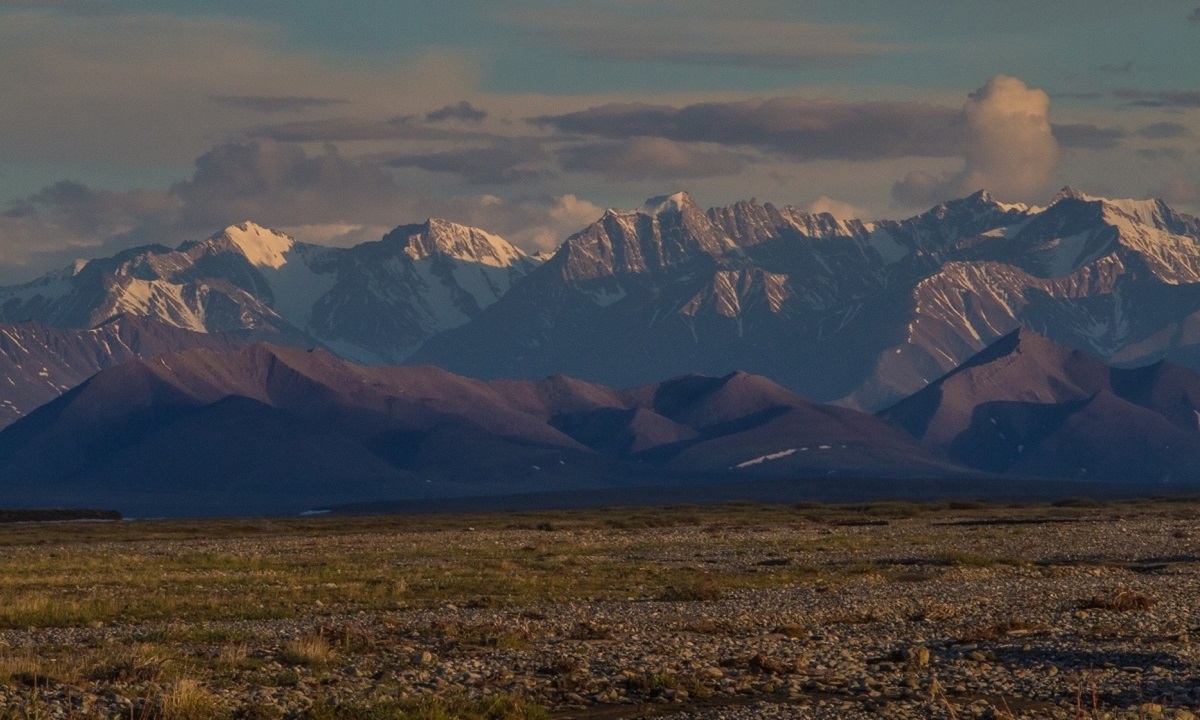The Arctic National Wildlife Refuge is as iconic an American natural ecosystem as Yosemite or the Grand Canyon. Established in 1960 by Dwight Eisenhower, it has protected and sustained a diverse wildlife population – polar bears, caribou, bald eagles, snowy owls and many others – as well as the lives and culture of the Gwich’in people, who have lived there for thousands of years.
But now it’s under siege by the Trump administration, which is intent on opening the Arctic Refuge’s 1.6 million-acre coastal plain to drilling of its oil and gas reserves. To that end it has accelerated required environmental reviews and quashed an internal memo on the demonstrated danger to threatened polar bears.
Perhaps most appalling is that congressional approval for this was inserted into the Tax Cuts and Jobs Act of 2017, signed into law last December. It was slipped in as an unrelated provision on the Senate bill. Language in the law requires the federal government to hold two lease sales within seven years.
Protection of natural resources and environmental justice usually go hand in hand, and drilling in the Refuge is no exception. The Gwich’in people (“Gwich’in” translates as “people of the land”) depend on the Porcupine Caribou Herd for physical, economic and cultural sustenance, and for millennia they’ve considered the coastal plain to be a sacred place. It’s where the caribou migrate to calve and nurse their young; the 1,500 mile route from their winter grounds to the calving grounds represent the longest overland migration of any mammal on Earth. The Gwich’in hunt as migration patterns bring the herd near their villages, never on the plain itself. Eighty percent of the Gwich’in diet derives from the caribou, making any disturbance of the migratory route a serious threat to their food security.
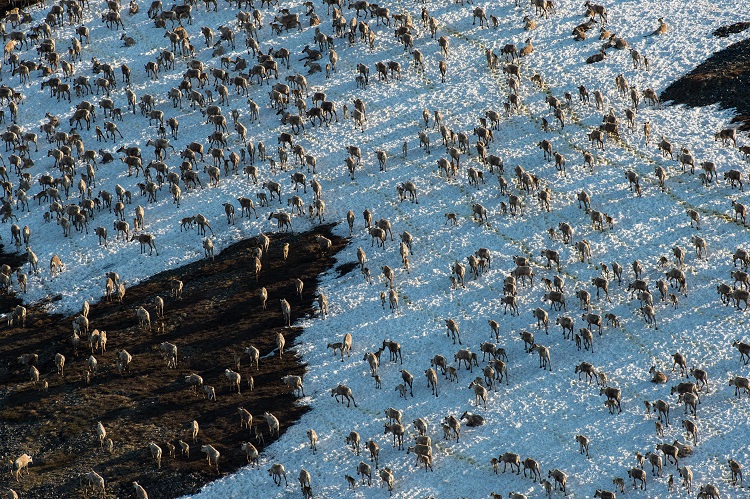
Porcupine Caribou Herd migration, photo by Peter Mather
Strength in Numbers
In the face of this threat, the Sierra Club stepped in to support the efforts of Gwich’in leadership by rallying people, attention, and resources to prevent drilling and defend their way of life. Because the risk of fossil fuel exploration in the Refuge is a recurring one, the Sierra Club has been in partnership with the Gwich’in for over 20 years. But this is the most fraught time yet, according to Michelle Piñon, the Sierra Club’s Seattle-based Arctic Organizer. “The 2017 tax bill took the threat to a place it’s never been before,” she says.
In response, the Gwich’in called for people across the U.S. to support them on the occasion of the Refuge’s 58th anniversary, which occurred on December 6. The Sierra Club organized impactful campaigns far and wide throughout December, including educational events and house parties. It also provided support to the Gwich’in during their visit to Capitol Hill in Washington D.C., along with 25 other Indigenous leaders from around the country, to engage directly with elected officials. These and other strategies brought critical visibility to the cause via the national press and on social media.
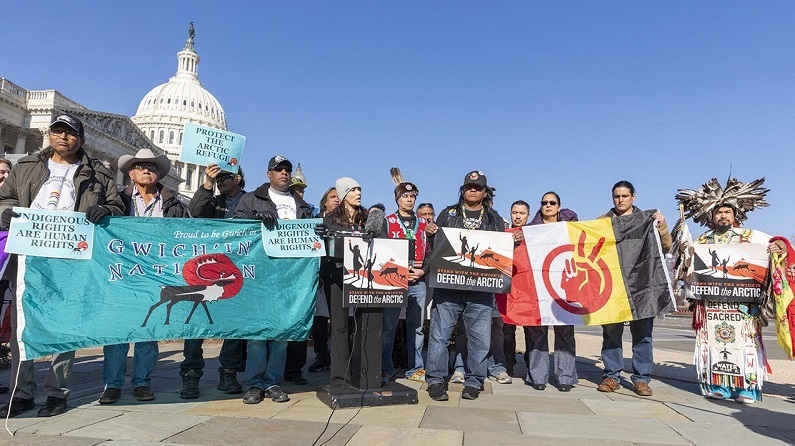
Indigenous leaders stand with the Gwich'in at Washington, D.C. event, photo courtesy of the Sierra Club
Piñon was energized by the two-day event. “Leaders from the Gwich’in Nation, Standing Rock Sioux Tribe, Navajo Nation, Lummi Nation, and others drew connections between their fights to defend their homelands and stand in solidarity against the administration’s attempts to prioritize the interests of corporate polluters over the human rights, culture, and way of life of Indigenous people," she says. The coalition also traveled to Houston, where on January 14 they hand-delivered over 100,000 public comments to SAExploration, the firm chosen to conduct seismic testing on the coastal plain, protesting this action. (Watch a video of their experience in Houston.)
Help will likely also come from the Democrat-controlled House of Representatives, where Rep. Raúl Grijalva of Arizona is now chair of the National Resources Committee. He flexed his power by protesting actions of the Bureau of Land Management, which is officially closed during the government shutdown but has nonetheless been holding under-the-radar meetings related to the review of potential environmental harm to the Refuge. Grijalva’s call-out forced the agency to postpone scheduling of mandatory public hearings until after the shutdown resolves.
From Sea to Shining Sea
Sierra Club volunteers also participated in outings across the country to support the campaign. Piñon feels these were especially meaningful due to the involvement of nontraditional environmental groups, including people of color and those living in low-income communities.
One such event was held on December 8 in Wilmington, New York, in close partnership with the Adirondack Wildlife Refuge (AWR), a nonprofit dedicated to wildlife rehabilitation and education. Sierra Club super-volunteer Bekah Ashley, a journalist and environmental activist in Lake Placid, organized the evening. “It was a great turnout, and it couldn’t have happened without the support of AWR’s founders, Steve and Wendy Hall,” Ashley says.
Attendees, both in-person and via live social media coverage, were given an overview of the threat to the Arctic Refuge and the political process driving it, and an introduction to some of its at-risk species. In addition to learning about the threat to polar bear dens from seismic exploration, the audience was charmed to meet two live ambassadors representing their Arctic brethren – Cara, a snowy owl, and a red fox named Pippin. There was a community dinner, and participants wrote messages of concern to SAExploration.
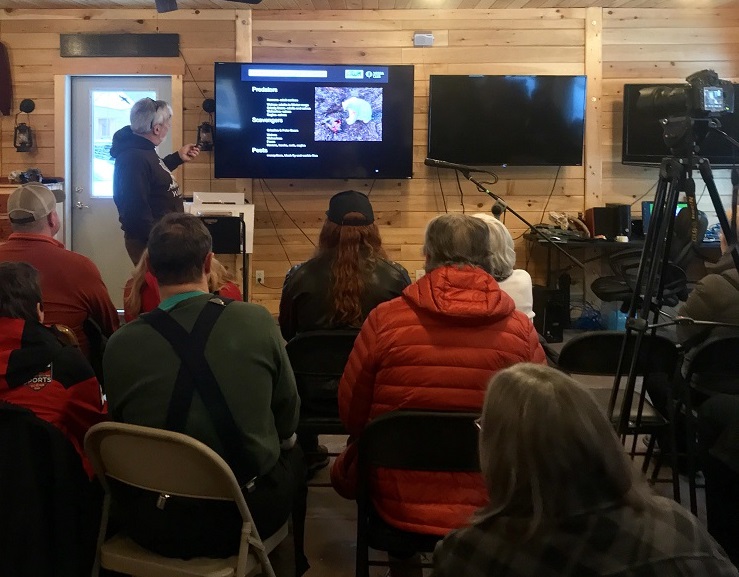
Adirondack Wildlife Refuge event, photo courtesy of the Sierra Club
Ashley has been focused on the Arctic Refuge and the Gwich’in since 2016, through the Sierra Club’s Our Wild America campaign. “I learned more over time, and it feels like a responsibility at this point,” she says. “It’s not an option to turn a blind eye to what’s going on there. We’re so far removed in the lower 48 from what’s happening – people just don’t know.”
Another noteworthy outing occurred in Seattle on December 6, hosted by Patagonia and organized by Piñon and Devon Richardson, a Sierra Club volunteer with Our Wild America. Around 70 attendees viewed “The Refuge”, a short film about the Gwich’in, followed by a panel discussion featuring Richardson, Alfonso Orozco of Latino Outdoors, and Erik Gearhart, a cultural and environmental educator. Local artist Patrick Nguyen led the interactive painting of a caribou portrait, which will be auctioned off to raise funds for the Gwich’in.
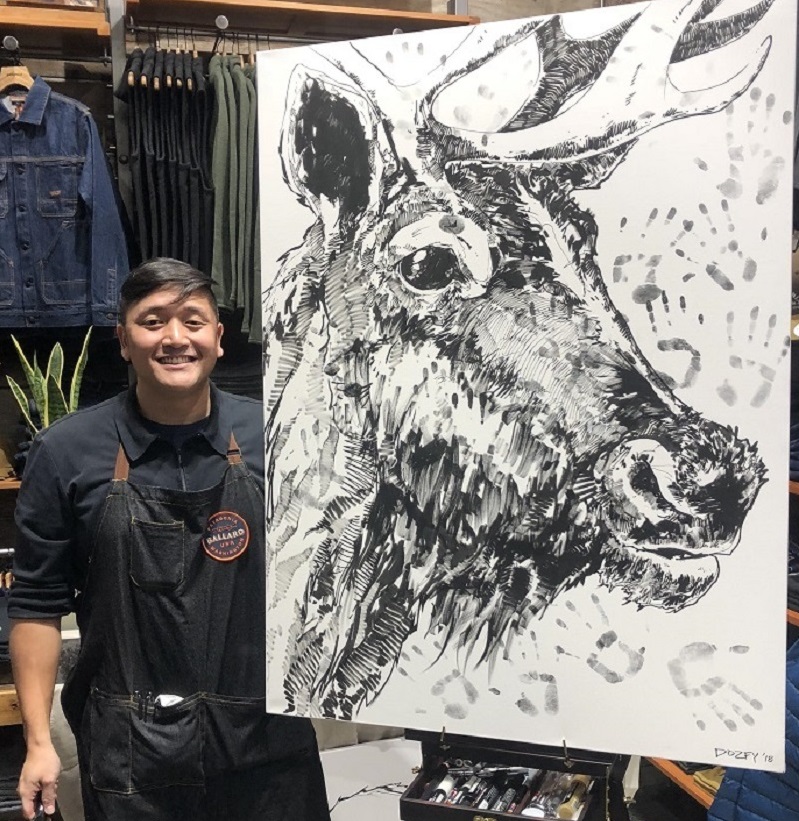
Artist Patrick Nguyen, aka Dozfy, at the Seattle event, photo courtesy of the Sierra Club
“It was a powerful evening,” says Richardson. “It conveyed that this is both a social justice and sustenance issue, and why people from all walks of life stand with the Gwich’in.”
Richardson was previously a Sierra Club intern, and her activism continues with its public lands and Arctic Refuge campaigns. “Public lands are everything to my region – sustenance, recreation, economic opportunity,” she says. “I have the privilege of enjoying these places at my leisure. I can't begin to imagine the connection to the land that Indigenous populations have, especially when their health and well-being requires functioning, intact, and biodiverse ecosystems. I hope to make strides in environmental justice and preservation of the spaces that unite us.”
All In
Piñon knows there are steep challenges ahead for both the Arctic Refuge and the Gwich’in, but she’s determined to carry on the fight. "The Trump administration refuses to listen to American citizens who clearly and consistently stand with the Gwich'in in opposition to drilling in the Refuge,” she says. “They’ve provided few opportunities for public participation and input. Nonetheless, our community of Sierra Club volunteers will continue to organize to protect the Refuge and stand with the Gwich'in people." Doubters beware.
